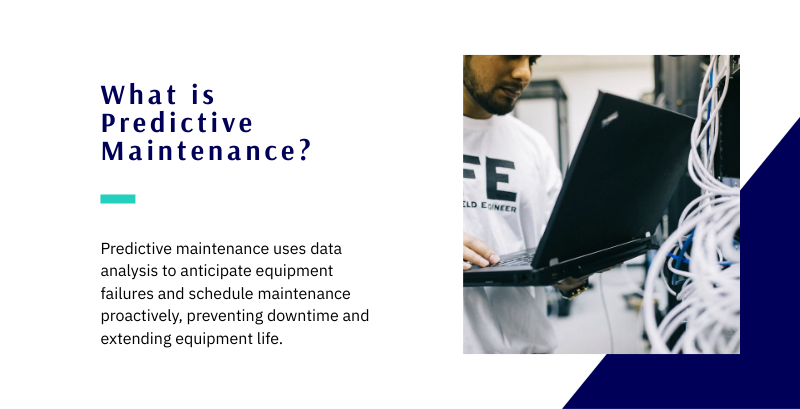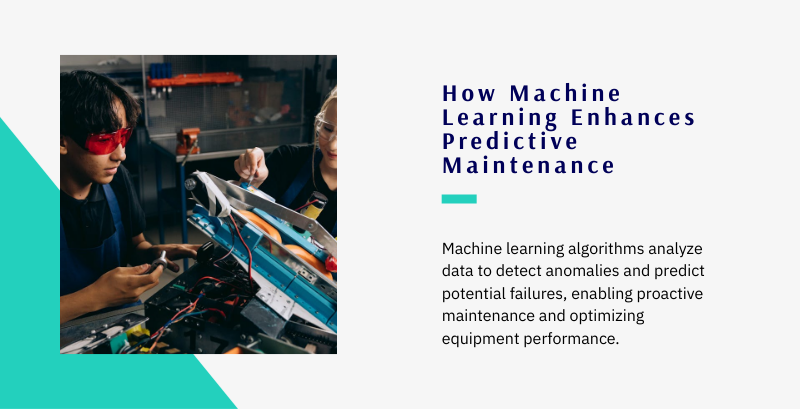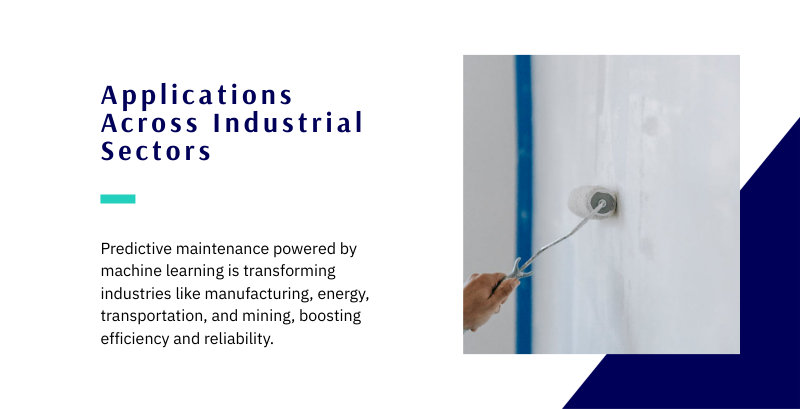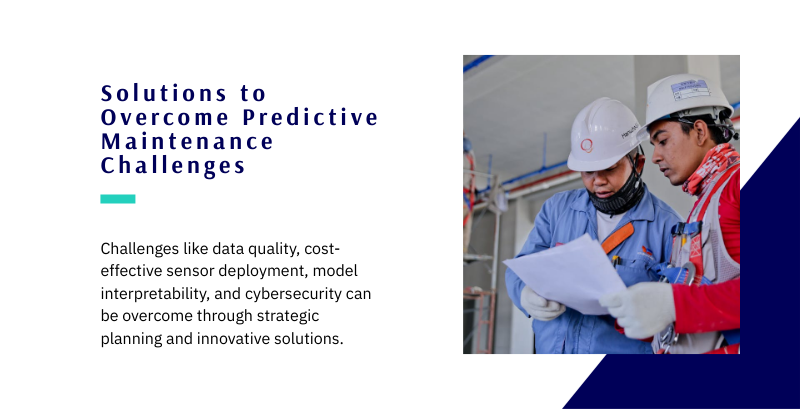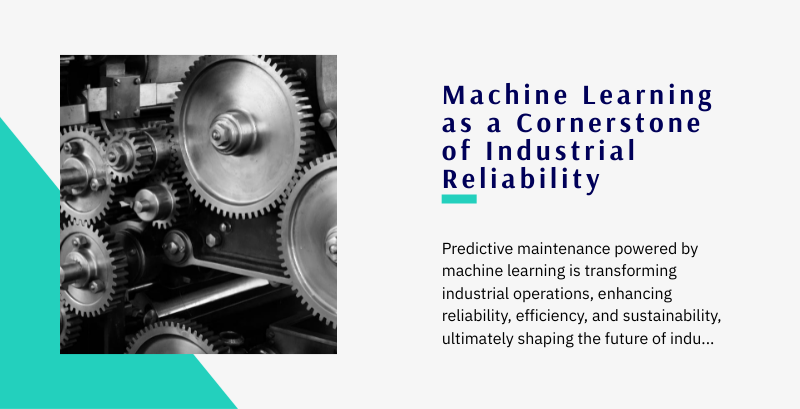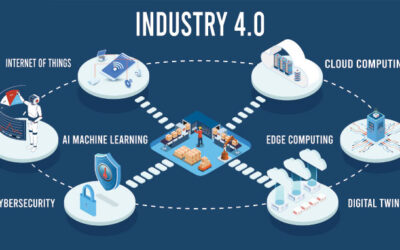Predictive maintenance (PdM) has revolutionized the landscape of industrial operations. Gone are the days when maintenance teams relied solely on scheduled checkups or reactive repairs. Today, with the emergence of machine learning (ML), industrial companies can anticipate equipment failures before they occur, saving time, money, and resources.
What is Predictive Maintenance?
Predictive maintenance is a proactive maintenance strategy that uses data analysis tools and techniques to detect anomalies and predict equipment failures. The primary goal is to minimize downtime, optimize maintenance schedules, and extend equipment life.
How Predictive Maintenance Differs from Traditional Methods
- Reactive Maintenance: Repairs are made after equipment failure.
- Preventive Maintenance: Routine maintenance is scheduled regardless of equipment condition.
- Predictive Maintenance: Maintenance actions are performed based on actual equipment condition predicted by data-driven insights.
Predictive maintenance offers a balance between cost and reliability, maximizing uptime without incurring unnecessary maintenance costs.
The Integration of Machine Learning into Predictive Maintenance
Machine learning enhances predictive maintenance by leveraging algorithms that learn from historical and real-time data to detect patterns, anomalies, and trends.
Key Machine Learning Techniques Used
- Supervised Learning: Algorithms trained on labeled datasets to predict failures.
- Unsupervised Learning: Identifies hidden patterns in unlabeled data to detect anomalies.
- Reinforcement Learning: Machines learn optimal maintenance policies through trial and error.
- Deep Learning: Neural networks handle complex patterns and large datasets for advanced predictions.
Data Sources in Predictive Maintenance
Successful machine learning models depend on diverse data sources, including:
- Vibration analysis
- Temperature readings
- Acoustic emissions
- Pressure and flow sensors
- Historical maintenance logs
- Visual inspections via computer vision
- Internet of Things (IoT) sensor streams
How Machine Learning Enhances Predictive Maintenance
1. Anomaly Detection
Machine learning models continuously monitor data streams and flag anomalies that could signify potential failures. These anomalies are often subtle and undetectable through manual inspections.
Example: A slight change in motor vibration frequencies could indicate bearing degradation long before catastrophic failure.
2. Failure Prediction and Remaining Useful Life (RUL)
ML algorithms can predict when a component is likely to fail and estimate its remaining useful life. This capability allows industries to plan maintenance actions just in time.
3. Condition-Based Monitoring (CBM)
Condition-based monitoring shifts the focus from periodic maintenance to real-time monitoring. ML models process sensor data to determine whether equipment is operating normally.
4. Intelligent Maintenance Scheduling
Machine learning optimizes maintenance schedules by balancing workload, risk, and resource availability. This reduces unplanned downtime and over-maintenance.
Core Technologies Powering Machine Learning in Predictive Maintenance
A. IoT Sensors
The backbone of PdM is the Internet of Things (IoT). IoT devices collect real-time data, feeding machine learning models with the necessary inputs for analysis.
B. Big Data Infrastructure
Large-scale data storage and processing systems like Hadoop, Spark, and cloud platforms enable companies to manage and analyze vast datasets.
C. Edge Computing
Instead of sending all data to the cloud, edge computing processes data close to the equipment, allowing faster response times for critical alerts.
D. Digital Twins
Digital twins are virtual replicas of physical assets. Machine learning analyzes twin behavior to predict real-world outcomes without disrupting operations.
E. Artificial Intelligence (AI) and Deep Learning
Advanced AI models like Convolutional Neural Networks (CNNs) and Recurrent Neural Networks (RNNs) enhance pattern recognition, anomaly detection, and failure forecasting.
Applications Across Industrial Sectors
Manufacturing
- Robotics maintenance
- Conveyor belt monitoring
- CNC machinery optimization
Energy
- Turbine health prediction
- Pipeline leak detection
- Electrical grid equipment monitoring
Transportation
- Railcar and locomotive maintenance
- Fleet management optimization
- Aircraft engine health monitoring
Oil and Gas
- Drill rig equipment condition monitoring
- Subsea equipment failure prediction
- Refinery asset management
Mining
- Heavy machinery health tracking
- Conveyor systems predictive upkeep
- Sensor-based ore processing plant optimization
Building an Effective Machine Learning Predictive Maintenance Strategy
Data Collection and Management
Accurate and comprehensive data is critical. Organizations should:
- Install high-fidelity sensors
- Centralize data storage
- Ensure data cleanliness and labeling
Model Development
Steps involved:
- Define the problem clearly (anomaly detection, failure prediction, RUL estimation)
- Select appropriate algorithms
- Train and validate models using historical and real-time data
Deployment and Monitoring
- Integrate ML models into operational workflows
- Monitor model performance regularly
- Continuously retrain models with new data
Feedback Loop
Incorporate technician feedback and operational insights to refine models continuously.
Challenges in Implementing Machine Learning for Predictive Maintenance
Data Quality and Quantity
- Sparse, noisy, or biased datasets can compromise model accuracy.
Sensor and Infrastructure Costs
- Initial investment in IoT sensors and data infrastructure can be substantial.
Model Interpretability
- Deep learning models often act as “black boxes,” making it hard to understand their predictions.
Organizational Change Management
- Resistance to adopting AI-driven maintenance workflows among traditional maintenance teams.
Cybersecurity Risks
- Increased connectivity introduces vulnerabilities that must be mitigated with strong cybersecurity measures.
Future Directions and What’s Coming Next
Autonomous Maintenance Systems
Self-healing machines that autonomously detect and correct minor issues are on the horizon.
Transfer Learning
Models trained on one type of equipment can be adapted to another, reducing the need for extensive retraining.
Explainable AI (XAI)
Efforts are underway to make machine learning models more interpretable, increasing trust in automated maintenance decisions.
Predictive Maintenance-as-a-Service (PdMaaS)
Cloud-based platforms offer subscription-based predictive maintenance solutions, democratizing access to advanced tools.
Sustainability Integration
Machine learning will increasingly optimize maintenance strategies not just for uptime but for reducing environmental impact, improving energy efficiency, and promoting circular economy practices.
Best Practices for Successful Implementation
- Start with a pilot project on critical assets.
- Collaborate between maintenance, IT, and data science teams.
- Prioritize explainable models to build operator trust.
- Ensure continuous improvement through regular feedback loops.
- Integrate cybersecurity from the start.
- Prepare a long-term strategy for scaling predictive maintenance across all operations.
Solutions to Overcome Predictive Maintenance Challenges
While challenges in implementing machine learning for predictive maintenance are real, they are far from insurmountable. With strategic planning and the right technologies, organizations can sidestep these obstacles and fully realize the potential of predictive maintenance.
Improving Data Quality and Quantity
One of the most critical steps is building a robust data acquisition framework. To enhance data quality:
- Standardize data collection procedures across all assets.
- Calibrate and maintain sensors regularly to prevent data drift.
- Implement real-time monitoring dashboards to catch anomalies in data streams early.
- Utilize data augmentation techniques to create synthetic datasets where historical data is sparse.
- Establish strict data governance policies to ensure accuracy, completeness, and relevance.
By investing upfront in data hygiene and structure, companies can empower machine learning models to deliver far more reliable predictions.
Cost-Effective Sensor Deployment
To balance cost with effectiveness:
- Prioritize critical assets first: Equip the most impactful machinery with comprehensive sensor arrays.
- Use smart, multi-function sensors: Devices that can monitor multiple parameters (temperature, vibration, pressure) simultaneously reduce hardware costs.
- Leverage existing infrastructure: Tap into current SCADA (Supervisory Control and Data Acquisition) systems or PLC (Programmable Logic Controller) networks.
Gradual, staged sensor rollouts focusing on the most failure-prone or revenue-critical assets ensure a quicker return on investment (ROI).
Enhancing Model Interpretability
Interpretability remains a major hurdle, especially when using complex neural networks. Solutions include:
- Adopting Explainable AI (XAI) techniques such as SHAP (SHapley Additive exPlanations) or LIME (Local Interpretable Model-agnostic Explanations).
- Using hybrid models: Combining simple, interpretable algorithms (like decision trees) with deeper networks to balance transparency and predictive power.
- Providing maintenance teams with actionable insights rather than raw algorithm outputs — for example, highlighting “bearing wear detected at 60% degradation” rather than opaque probability scores.
Increasing model transparency builds trust with maintenance technicians, easing adoption.
Cybersecurity Integration
As systems become more connected, cybersecurity must evolve alongside predictive maintenance platforms. Best practices include:
- Encrypting sensor data both in transit and at rest.
- Applying network segmentation: Isolating critical operational technology (OT) networks from general IT traffic.
- Regular penetration testing of IoT and ML systems to identify vulnerabilities.
- Using AI-powered cybersecurity solutions that can detect and respond to anomalous network behavior.
A holistic approach to cybersecurity ensures predictive maintenance initiatives do not inadvertently create new operational risks.
Driving Cultural Change
Predictive maintenance represents a paradigm shift. To help organizations embrace this evolution:
- Conduct workshops and training sessions to demystify machine learning for non-technical staff.
- Showcase quick wins: Share early success stories internally to demonstrate tangible benefits.
- Create cross-functional teams: Foster collaboration between data scientists, maintenance engineers, and management.
- Provide transparent communication on how predictive maintenance empowers — rather than replaces — maintenance teams.
By addressing cultural resistance proactively, organizations can foster a data-driven mindset at every level.
Advanced Techniques Elevating Predictive Maintenance
As industries mature in their use of machine learning for predictive maintenance, new techniques and tools are pushing the boundaries of what’s possible.
Federated Learning for Cross-Company Insights
Instead of aggregating all sensitive equipment data in a central repository, federated learning enables different plants or even different companies to train shared models locally and collaboratively. This approach preserves data privacy while boosting model performance across broader operational contexts.
Transfer Learning for Faster Deployment
Training a machine learning model from scratch for every new type of equipment is resource-intensive. Transfer learning enables organizations to take pre-trained models and fine-tune them with minimal new data, dramatically accelerating predictive maintenance deployment.
For instance, a model trained on jet engines could be adapted to monitor gas turbines with relatively little rework.
Synthetic Data Generation
Sometimes, real-world failure data is rare — which is a good thing operationally but a hurdle for training predictive models. Synthetic data generation using techniques like Generative Adversarial Networks (GANs) enables the creation of realistic fault data, enhancing model robustness.
Explainable AI (XAI) Dashboards
Rather than presenting predictions as black boxes, cutting-edge solutions now deliver explainable dashboards. These interfaces show:
- Which factors contributed most to a failure prediction
- Confidence levels for each prediction
- Recommendations for preventive actions
This layer of transparency closes the gap between machine insights and human decision-making.
Machine Learning as a Cornerstone of Industrial Reliability
Machine learning is reshaping predictive maintenance, turning maintenance from a reactive cost center into a proactive source of competitive advantage. Industries that master this transformation will enjoy:
- Reduced downtime
- Lower operational costs
- Extended asset life
- Improved safety
- Enhanced sustainability
However, success depends not just on technology but on a holistic approach that blends data excellence, organizational change management, cybersecurity, and continuous innovation.
As machine learning techniques become more advanced and accessible, the future of predictive maintenance looks not just promising — it looks inevitable. For forward-thinking organizations, the time to invest in machine learning-driven predictive maintenance is now.


